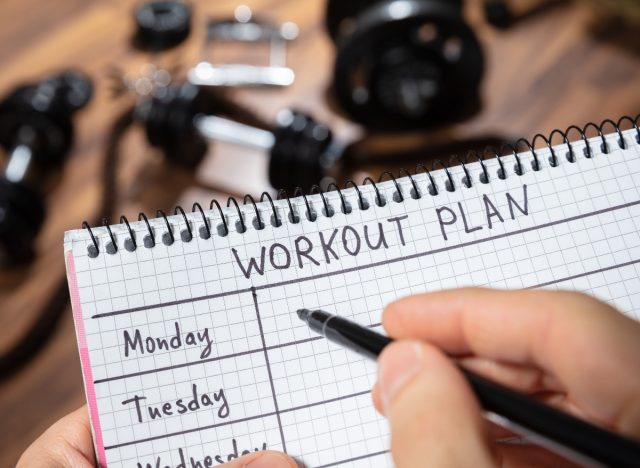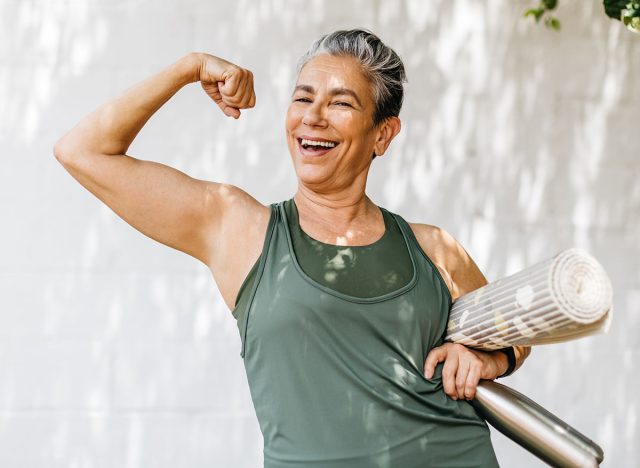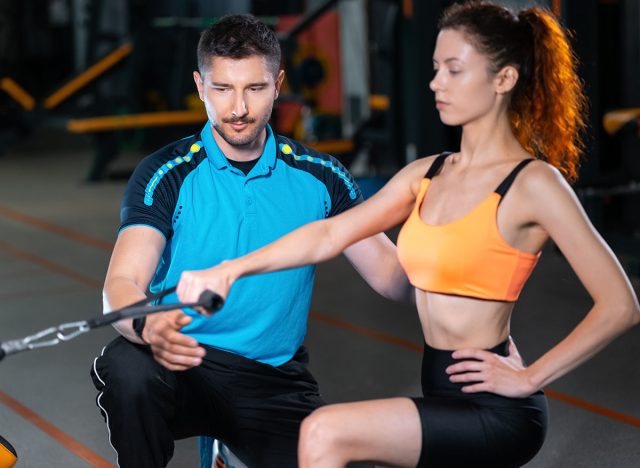6 Classic Exercises That Keep You Stronger Than Most People Half Your Age

Watching your body slow down feels inevitable, but it doesn’t have to be your reality. As the Co-Founder and CEO of Studio Pilates International, my life’s work is helping people feel strong, energized, and confident in their bodies, and I’ve seen firsthand that age doesn’t have to dictate your strength. While hormones shift as we age, your body remains highly trainable at any stage of life. The secret isn’t accepting weakness as a fact of aging—it’s understanding that progressive resistance training 2–3 days a week, combined with proper recovery and protein, can deliver real gains in strength, bone density, and balance. Here’s how six foundational exercises can help you stay stronger than people decades younger.
The Biggest Myth About Aging You Need to Stop Believing
The myth I’d love to retire is that strength loss is inevitable as you age. Hormones shift, sure – but your body stays highly trainable. Give it progressive resistance 2–3 days a week, prioritize recovery and protein, and you’ll see real gains in strength, bone density, and balance at any stage of life. You just have to be willing to put in the work.
Why You’re Probably Getting Weaker (And It’s Not Your Age)
Because it’s easy to mistake soreness or stiffness for a stop sign. Many people back away from resistance training – the very thing that keeps you strong and mobile. At Studio Pilates International, we watch clients from their 20s through their 80s improve within weeks: not just strength, but posture, balance, and confidence. The belief ‘I’ve got to get fit/flexible before I start’ is exactly upside down. Start – scale the load, progress week to week – and you get fit.
6 Classic Exercises That Keep You Stronger After 40
Sit-to-Stand Squat (from a chair)
One of the best indicators of functional strength. Strengthens quads and glutes – the muscles that help you climb stairs, carry groceries, and stay independent.
How to do it:
- Sit tall on a chair, plant your feet shoulder-width apart
- Stand up without using your arms
- Lower back down with control
- Aim for 3 sets of 30-50 reps
Make it easier: Use a higher chair
Make it harder: Add in some 3-second holds at the bottom of the movement, hovering just above the chair without touching it
Common mistake: Letting knees cave inward – keep them tracking over your toes.
Single Leg Squat
Similar to Sit-To-Stand but this time, use one leg. Strengthens each leg individually and improves balance.
How to do it:
- Position a chair behind you
- Use something sturdy on each side of you to hold onto for balance
- Start standing, balancing on one leg
- Squat down as close to the chair as you feel confident to do
- Aim for 3 sets of 15-30 reps on each leg
Make it easier: Use a higher chair
Make it harder: Add in some 3-second holds at the bottom of the movement, hovering just above the chair without touching it
Common mistake: Letting knees cave inward – keep them tracking over your toes. Allow the hip on the floating leg to tilt and drop down towards the floor.
Glute Bridge
Builds glute and hamstring strength while protecting your lower back.
How to do it:
- Lie on your back with knees bent and feet hip-width apart
- Squeeze your glutes to lift your hips until your body forms a straight line from shoulders to knees
- Hold for two seconds, then lower
- Do 3 sets of 30-40
Make it easier: Shorten the range
Make it harder: Try single-leg bridges
Common mistake: Pushing through your toes instead of heels.
Push-Up (starting at the kitchen countertop)
Strengthens chest, arms, shoulders, and core – critical for daily pushing movements.
How to do it:
- Begin with your hands on the kitchen countertop or on a very heavy table that will not move
- Position legs out behind you, body in a straight line in a modified push-up position
- Lower your chest toward the countertop, then press back
- As you get stronger, move to the floor with your knees resting on the floor
- Do 3 sets of 10-20
Make it easier: Wall push-up
Make it harder: Floor push-up
Common mistake: Sagging hips/lower back/mid section – brace your core and keep your body aligned.
Row (with bands or dumbbells)
Strengthens back and posture, balancing out pressing work.
How to do it:
- Hinge slightly forward at the hips, keeping your back straight
- Draw the weights or band toward your ribcage
- Squeeze your shoulder blades down and back towards each other
- Release the shoulder blades and extend the arms, taking your hands back down toward the floor
- Aim for 3 sets of 10-20
Make it easier: Lighter band or weight
Make it harder: Heavier load
Common mistake: Rounding your shoulders – keep your chest open and lead with your elbows.
Plank (with progressions)
Trains the deep core muscles that protect your spine and keep you steady.
How to do it:
- Start on your forearms with knees down, body in a straight line
- As you build strength, lift to your toes and eventually add shoulder taps or bird-dog progressions
- Hold for 20-40 seconds, repeating 3 times
Make it easier: Incline plank
Make it harder: On toes, knees off the floor
Common mistake: Holding your breath – breathe steadily throughout. Also, prevent sagging hips/lower back/mid section – brace your core and keep your body aligned
How to Structure Your Weekly Routine

Three days a week is ideal. If you can build it up to 4-5 days a week, then great. As your endurance level increases, you can increase the difficulty of the exercise, or do more sets or more reps.
Don’t forget to factor in rest days into your routine. If your body needs recovery, listen to your body and act accordingly by giving it what it needs. Combine your resistance training with walking or do light cardio for 20-40 minutes a few days a week.
How Nutrition Supports Your Strength

Food drives adaptation. As we age, we need more high-quality protein to repair and build muscle, plenty of fiber and micronutrients from vegetables, salads and whole fruit, and carbs in their simplest, least-processed form to fuel training without the blood-sugar rollercoaster.
So: protein first on the plate, plants next, then simple whole grains like plain rice or oats – not ultra-processed mixes. Hydrate daily, and trim – or better yet, drop – alcohol. It offers no performance upside and it undercuts recovery. Nail these basics and your workouts translate into real, lasting strength.
What Progress Can You Realistically Expect

It depends on how consistent you are and how disciplined your nutrition is, but a solid baseline is 4 to 8 weeks to notice daily tasks feel easier and 20-40% strength gains on beginner loads.
By 8 to 12 weeks, most people see visible muscle, improved posture, and report significantly higher energy. Results compound when you keep it simple: 2-3 sessions/week will get you a result, but want more rapid progress? Double that number to 4-6.
Keep increasing your resistance levels week to week, consume protein at every meal, and get as much sleep as you can. Consider adding in things like Sauna and deep tissue remedial massage to aid recovery and keep the body moving efficiently and without pain.
Your Next Steps

Action beats anxiety. Book two sessions this week, choose a place and style you enjoy, and commit to 45 minutes, 2–3×/week and begin to level up from there. Start small, nail technique, progress gradually, but you have to progress. If you’re new or have medical conditions, check with your doctor first. Stick with the basics – squat, hinge, push, pull, carry, core – and watch consistency do the heavy lifting.
Looking for easy ways to lose fat? Here’s How Long Your Walking Workout Should Be To Shrink Belly Fat.